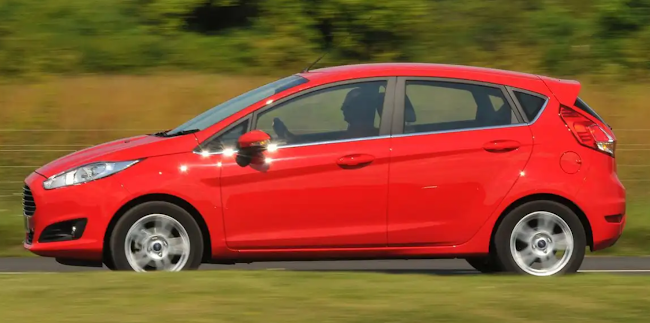When Will Used Car Prices Drop?
Why Are Secondhand Cars So Expensive And Will Costs Start To Fall?
As second-hand car prices continue to rise - buyers may wonder what the reasons behind the increase can be. This article was written around Uk stats, but motorists looking for cars for sale in Sandton are certainly wondering the thing.
Used car prices have soared to unprecedented levels in recent months, adding to the growing pressure on household budgets.
Figures from Auto Trader - one of the biggest used car marketplaces - show that prices on cars for sale, Germiston not excluded, have risen year-on-year.
The Auto Trader retail price index shows average second-hand values are more than 15% higher than they were last year, but increases have slowed significantly in recent months.
New figures from industry body the SMMT also show that used car sales dipped in the second quarter of this year, and some retailers have reported a decline in prices in recent weeks, prompting speculation that prices could start to fall.

Why are used car prices so high?
A perfect storm of events over the last two years has pushed up prices far beyond what would normally be expected, with much of the cause traced back to problems in the new car market.
The end of lockdown coincided with a global shortage of vital electronic components. These have left the new car market struggling to meet customer demand, which has in turn driven up demand and prices in the second-hand sector.
James Fairclough, CEO of used car specialists AA Cars, says that demand which built up while dealers were forced to close during the first lockdown led to a surge on the market from mid-2020 onwards.
As dealers gradually reopened customers flooded back and demand for new and used car soared while factories struggled to get back to full production capacity.
This demand was amplified as thousands of people opted to drive rather than return to public transport amid continuing fears of Covid infection.
At the same time, car makers were affected by the worldwide shortage of electrical semiconductors, which are vital to many operating functions of modern vehicles. This has seen manufacturers struggle to produce new cars, with some firms cutting production shifts at factories or removing options from vehicles to cope with the shortage. Ford has paused orders on its best-selling Fiesta and Focus models due to component issues.
Mr Fairclough explains: “With the number of cars rolling off production lines stagnating or falling, anyone wanting to buy new often faced a long wait; and as a result, much of this demand shifted to the secondhand market instead.”
This surge in demand for used cars has inevitably pushed up asking prices and while much of the demand is for relatively new models, it has had a knock-on effect across the entire market.
When will used car prices drop?
Auto Trader’s data shows that in recent months price increases have softened significantly - from a record year-on-year change of 32.2% in April to 15.6% growth in August. Month-on-month growth has also almost stopped (up just 0.3% between July and August).
However, Richard Walker, Auto Trader’s director of data and insights, said that did not signify an end to high prices. He said: “We’ve seen a number of misleading comments recently suggesting that the market is in a steep decline, prices are on the verge of crashing, or consumer demand has plummeted, but these are either based on insufficient data or a simple misinterpretation.
“Although there are clear potential headwinds, consumer demand remains stable, and fuelled by the circa four million new and used car transactions ‘lost’ since 2020, as well as a range of other macro-economic factors, we’re confident levels will be sustained. Coupled with ongoing supply challenges, these market dynamics will continue to keep prices strong for the foreseeable future.”
The factors which have driven the recent surge in prices continue to influence the market.
Many car makers are still warning of long waiting lists for new cars, although the supply problems appear to be starting to ease. Volkswagen’s chief financial officer Arno Antlitz has admitted the chip shortage could affect the industry until 2024. That will mean buyers will either face a long wait for a brand-new car or have to opt for a nearly-new model instead.
A secondary effect of the chip shortage is on the supply of second-hand cars. With fewer new models being sold, there are fewer cars being traded in and making their way onto the used car market.
James Fairclough explains: “The used market usually receives a steady flow of supply of nearly-new cars that have been driven on finance, and then returned. But with fewer new cars being bought or financed during the pandemic, the supply of one to two-year-old cars now coming to market could start to decline, and this is likely to push up prices in the nearly-new sector of the market.”
He believes that although prices have softened recently, used values in some areas will remain high: “The slowdown in used car price growth stems from the fall in demand triggered by weakening consumer confidence. With less competition among buyers for cars, price rises are cooling.
“This isn’t the case for every vehicle through — the most popular models are still in high demand relative to supply, and prices will remain steady among those cars. Electric vehicles in particular have surged in popularity, and as a result, they are holding their prices well.
“There has also been a decrease in the number of new cars coming onto the used market, meaning supply is still lower than normal for nearly-new vehicles with low mileage.”
This view is echoed by Sue Robinson, chief executive of the National Franchised Dealers Association (NFDA). She says: “The NFDA expects used car values to remain strong. Current new car volumes are restricting the number of part-exchange vehicles reaching the market that would normally help supply dealer forecourts, and at the same time some consumers needing a car quickly are turning to the used market to source a car.”
Mr Walker believes such supply issues will last for many more months. He says: “Making predictions in the current geopolitical climate is even more difficult than usual, but we expect the supply issues to last until the end of the year, which along with the current healthy levels of consumer appetite, will keep used vehicle prices strong for some time to come.”
Falling prices
Nonetheless, some retailers have reported a recent drop in some used car prices. Heycar’s latest used car price index shows that the average asking price of a five-year-old car on its site in July was 1.8% lower than the month before and 13% down on January 2022.
However, after a slight decline in July, prices of three-year-old models climbed by around 5% in August and were still 14% higher than a year ago.
Chris Evans, head of sales at Heycar, says the industry faced difficult times and predicted a slow decline in the market.
He says: “Combining the cost of the living crisis and rising inflation, the knock-on effect for the new and used vehicle industry is becoming increasingly concerning. The latest data from the Heycar Used Car Price Index shows that prices for older used cars are on a downward trend in 2022.
“That said, there are some rays of light for the industry. Fears of a used car price crash in 2022 appear to be unfounded. Instead, we expect the market to deflate slowly to pre-pandemic levels as the lack of new vehicles continues to cushion the impact of falling consumer confidence. “
Lisa Watson, director of sales at Close Brothers Motor Finance, adds: “There are signs that the challenges [to new market supply] are beginning to subside and used car prices could start cooling off.”
In August, the new car market grew for the first time since February, raising hopes that supply chain issues could be easing.
Some observers also believe that the growing cost of living crisis could also play a role in keeping used prices high.
Mr Fairclough says: “Cost of living pressures mean the second-hand market will continue to see interest from drivers who would ordinarily buy a new car. The used car market offers them a greater choice at all price points, and less to worry about in terms of depreciation.”
That’s not to say it’s bad news across the board, not all models are as in demand and Auto Trader figures show some, including models from Audi, Mercedes, Land Rover and BMW have seen reductions in the value of between 3 and 20% since last July.
Mr Fairclough adds: “Many cars have not seen the same demand pressures, and those in plentiful supply have seen much more modest price rises.
“Anyone in the market for a used car should do their research beforehand, and consider comparing prices outside their local area too - as there can be great variation in prices depending on the availability of particular models.”
.
.
.
Info sourced from https://ultimateusedcars.wordpress.com/2022/12/23/when-will-used-car-prices-drop/


Comments
Post a Comment